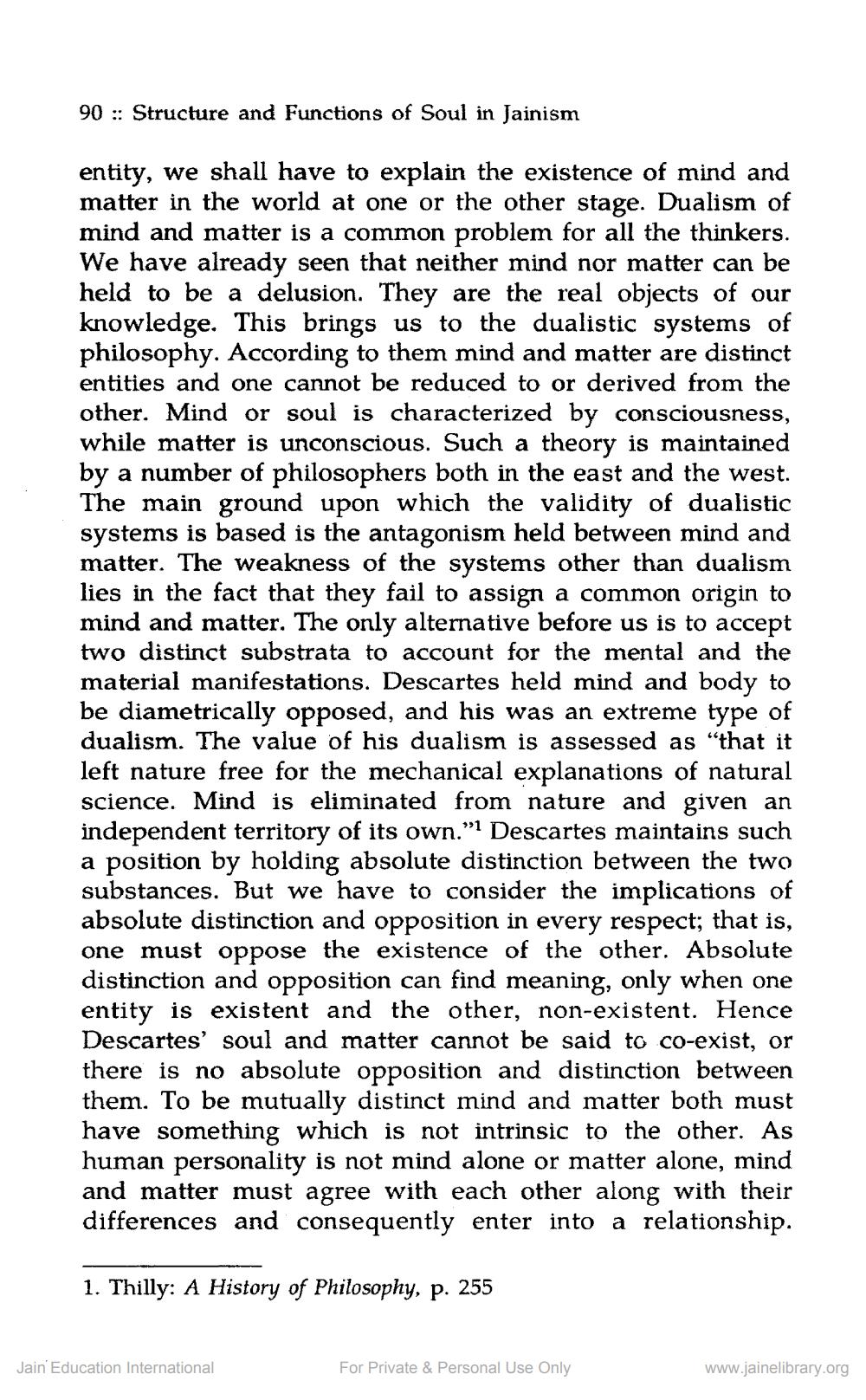________________
90 :: Structure and Functions of Soul in Jainism
entity, we shall have to explain the existence of mind and matter in the world at one or the other stage. Dualism of mind and matter is a common problem for all the thinkers. We have already seen that neither mind nor matter can be held to be a delusion. They are the real objects of our knowledge. This brings us to the dualistic systems of philosophy. According to them mind and matter are distinct entities and one cannot be reduced to or derived from the other. Mind or soul is characterized by consciousness, while matter is unconscious. Such a theory is maintained by a number of philosophers both in the east and the west. The main ground upon which the validity of dualistic systems is based is the antagonism held between mind and matter. The weakness of the systems other than dualism lies in the fact that they fail to assign a common origin to mind and matter. The only alternative before us is to accept two distinct substrata to account for the mental and the material manifestations. Descartes held mind and body to be diametrically opposed, and his was an extreme type of dualism. The value of his dualism is assessed as “that it left nature free for the mechanical explanations of natural science. Mind is eliminated from nature and given an independent territory of its own."? Descartes maintains such a position by holding absolute distinction between the two substances. But we have to consider the implications of absolute distinction and opposition in every respect; that is, one must oppose the existence of the other. Absolute distinction and opposition can find meaning, only when one entity is existent and the other, non-existent. Hence Descartes' soul and matter cannot be said to co-exist, or there is no absolute opposition and distinction between them. To be mutually distinct mind and matter both must have something which is not intrinsic to the other. As human personality is not mind alone or matter alone, mind and matter must agree with each other along with their differences and consequently enter into a relationship.
1. Thilly: A History of Philosophy, p. 255
Jain Education International
For Private & Personal Use Only
www.jainelibrary.org




